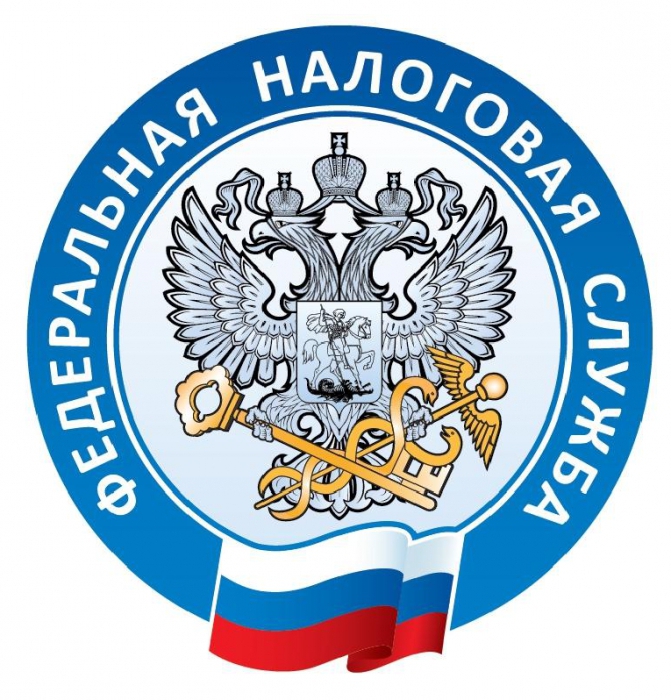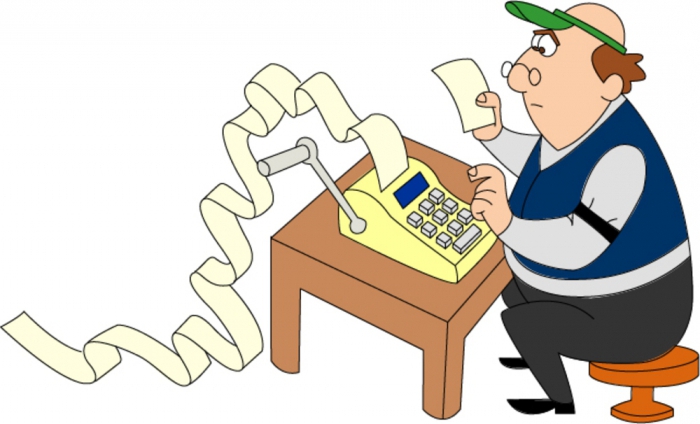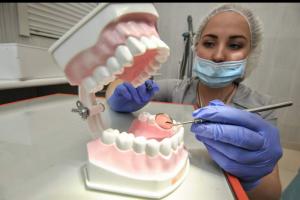In Russia, there are three of the most popular tax systems - general (OCH), simplified (STS), as well as a single tax on imputed income (UTII). In other contexts, the term we are talking about is used very rarely in Russia (mainly to describe some economic phenomena that are characteristic of foreign countries). What are the distinctive features of UTII? In what cases can it be used? How is tax calculated correctly? How long does an entrepreneur need to report to the Federal Tax Service?
What is UTII?
Unified imputed income tax (UTII) is a fee the amount of which does not depend on the actual revenue of the organization. Its value is "charged" by the state, based on calculated indicators. The main, according to a number of experts, is the purpose with which the state introduced such concepts as UTII and determined tax rates for imputed income - to increase the collection of fees from those types of entrepreneurial activities where it is difficult to control the actual flow of funds.

This method of taxation is attractive, of course, not only for the Federal Tax Service, but also for entrepreneurs. Because you can earn a lot, and pay to the treasury - a fixed amount, and in most cases less than if standard taxes were paid, the amount. However, if there are no incomes or they are small - UTII still need to be paid.
If the company contributes a single tax on imputed income to the treasury, it is exempt from other types of fees. Such as, for example, income tax (and if the business runs IP, then personal income tax), property, and also VAT (only if it is not about importing goods into Russia). At the same time, entrepreneurs retain obligations to pay personal income tax for employees and transfers for them (and for themselves) contributions to state funds. Transport, water and land taxes are also included in the treasury - if the appropriate type of business is being conducted. Property tax, meanwhile, is not necessary to pay.
Types of businesses where UTII can be applied
A single imputed income tax can be applied only if the business is conducted in the following industries:
- veterinary services, domestic services;
- repair, maintenance, washing, parking;
- transport services;
- public catering;
- retail;
- advertising on outdoor banners, cars;
- rental housing;
- commercial use of trading places (including land).

The most important nuance: if an individual entrepreneur or LLC carries out activities in several areas, then a single tax on imputed income is paid for each of them. Areas of entrepreneurial activity are indicated during the registration of a business in the relevant documents (or added in the course of business).
More on business types
Let us consider in more detail the aspect relating to the types of activities that fall under UTII.
The first item that is indicated by us above is rendering household services to individuals - B2C segment. This area includes a fairly wide range of services:
- tailoring (as well as repair) of clothes (including fur), shoes;
- production of haberdashery goods from metal;
- funeral services, production of wreaths, monuments, fences;
- the manufacture of windows and doors, apartment blinds (as well as their installation);
- glass processing;
- repair of household appliances;
- release of toys and board (not computer) games;
- organization of reception of glass containers, various recyclables (except scrap metal);
- glazing of windows and doors;
- detective services;
- construction and repair of houses;
- landscaping;
- teaching sports disciplines;
- tutoring services;
- implementation of design projects;
- cleaning of premises;
- caring for children and people who need it;
- work related to welding, installation, installation of plumbing;
- hairdressing, bath services, massage parlors, paid toilets;
- veterinary services;
- production of food products of agricultural origin;
- the provision of medical services in private clinics, the release of drugs;
- security, safe escort;
- baggage transportation at airport terminals, as well as at train stations;
- services of photo workshops, recording studios, video production;
- printing services, book binding, engraving, photocopying.
The next item is car maintenance. Everything is simple here - repair and car wash are carried out. But it also includes technical inspection services.
Further, these are transport services. This includes the transportation of passengers and goods - for individuals with non-cash and cash payment, for legal entities - only by "non-cash". Moreover, the ownership of the enterprise should be no more than 20 pieces of equipment. Under UTII also includes work with foreign counterparties.
The next item is the provision of housing for rent. The main feature here is that you can rent out the property that belongs to the company, as well as that provided by other legal entities or even individuals. At the same time, the sleeping quarters in each leased property should not be larger than 500 sq.m.
Catering services can be provided both in facilities with a hall for customer service, and without it - but only if there are conditions where visitors can use purchased products. For example, if fresh buns are baked for visitors to the cinema or the food court of the shopping center.
As for retail, the only significant limitation here is the area of the store, which should not be more than 150 square meters. m. This includes mobile (distribution) sales, vending (trade through specialized machines). Customers of retailers can also be state-owned companies.
UTII calculation
Calculation of imputed income is carried out according to a special formula. It consists of four main components. This is the basic yield, the so-called "physical indicator", as well as two corrective factors - the main and inflationary. The numbers for each of the components are multiplied among themselves - this is the sum of imputed income. In turn, the UTII payable to the Federal Tax Service as such is 15% of it, multiplied by 3 (since the tax is calculated on a quarterly basis).
The value of each of the components of the formula is determined by the state and depends mainly on the type of activity and those resources that bring profit to the entrepreneur. The basis for the calculation of a physical indicator may be the service provider. Or, for example, trading area, on which sales are being conducted. The basic yield in the first case is 7500 rubles. (per specialist), in the second - 1800 rubles. (per 1 sq. m. floor space) per month.
The intricacies of the "bases"
Thus, the components of the “formula” by which the taxpayer’s imputed income is calculated are quantities that are not so easy to calculate without knowing the source data. For different industries, the principles of tax calculation are very specific. However, let’s try to calculate the amount of imputed income for the largest segment of Russian business - retail.
First of all, we note that even within the framework of retail - it would seem so uniform business area, physical indicators can be different.

If the trade is conducted through shops in which there are trading floors, as well as those with an area of more than 5 square meters, then the indicator in question is calculated based on 1 square meter. territory., multiplied by 1800 rubles.
If the sale is carried out through the premises without a trading floor, but its area is less than 5 square meters, then the rate of imputed income will depend on a fixed amount of physical indicator equal to 9 thousand rubles.
When delivery or delivery trade - 4500 rubles. from one seller.A similar amount - when using vending machines (from each machine).
Another difficulty - the main corrective coefficient for retail, regardless of the type of outlet, is determined by the municipal authority of the city where the business is conducted. Inflation, in turn, is the same for all segments of the business - in 2014 it is equal to 1,672.
So, we calculate UTII. Suppose that SP Sidorov V.G. It trades in Chinese tea from trays located in different points of the shopping and entertainment center. In total - 5 points. For each of them - one seller. In this case, the physical indicator will be calculated as follows: 4500 multiplied by 4. That is, 18 000. We take the correction coefficient that is installed, for example, in Samara. In this city, it is equal to 0.5. The inflation parameter that is applied throughout the country is already known to us.
So, the value of imputed income for Sidorov’s business is 18,000 times 0.5 and 1.672. That is, it turns out 15,048 rubles.
Next, we take 15% of this amount. This is 2257 rubles. 20 kopecks You can round to 2257. Multiply by 3, it turns out 6771. This is the UTII, which until the end of the quarter IE Sidorov will have to pay to the Federal Tax Service.
It is worthwhile, however, to cancel that in some regions of the country the main coefficient may not be 0.5, but 1. This means that UTII will come out exactly twice as much as in Samara.
How beneficial is the imputed tax regime? If you compare, for example, with the simplified tax system?
Take the option when the "simplified woman" is calculated on income (excluding expenses), and a tax of 6% of revenue is paid to the treasury. It is easy to calculate - the simplified tax system will be more profitable than UTII (in this case, in the numbers that are practiced in Samara) if the company's turnover is about 110 thousand rubles. per month or less. This is very little even for a novice entrepreneur. Most likely, he will make a choice in favor of UTII.
Correlation of UTII and other tax regimes
 We said above that if an entrepreneur conducts several types of activities, then UTII he must pay for each of them.
We said above that if an entrepreneur conducts several types of activities, then UTII he must pay for each of them.
This rule can be supplemented by one more. If some types of activity fall under UTII, while others do not, then taxation for each is separate.
Consider an example. IP Petrov A.B. at the same time provides computer repair services and sells PCs and accessories for them.
Regarding the first area of activity, he cannot apply the scheme by which imputed income is calculated.
Therefore, Petrov will pay taxes in the simplified tax system or the general system - in proportion to the actual revenue. In turn, in the part of the activity in which the entrepreneur trades in components, it is still possible to use UTII. He will be able to pay tax on imputed income according to the norms of the state.
Benefits and deductions
As we said above, even if an entrepreneur transfers UTII to the treasury, he is not exempted from paying other fees. However, there are also some concessions. The tax on imputed income may be reduced by the amount of contributions paid to state funds (PFR, FSS, MHIF). True, only for those people whose work is directly related to activities compatible with UTII. In the case of Petrov’s business, these will be computer sellers. Contributions for engineers who repair PCs will not count. You also need to keep in mind that the system of taxation of imputed income allows you to reduce the amount of UTII due to contributions to funds by no more than half.
If an individual entrepreneur does not have employees, he can reduce UTII by the amount of fees paid to the FIU and the Social Insurance Fund for himself. And in full. In turn, if there are employees, then the entrepreneur can only use contributions for them to reduce UTII. Those that are made for themselves cannot be taken into account.
Subtleties of accounting at UTII
Entrepreneurs conducting activities within the framework of UTII are required to keep a book of accounting for income and expenses (unlike those entrepreneurs who work, for example, under the simplified tax system).Cash transactions must fully comply with the law (as a rule, these are the Regulations of the Central Bank of the Russian Federation). Even if they reflect imputed income for individual entrepreneurs (although until 2012, these rules were valid only for business entities). You must pay UTII until the 25th day of the month that follows the reporting period.
Reporting to FSN
What kind of documents does an entrepreneur collect at UTII and in what time frame is it obliged to submit them to the tax? There are a lot of those. Consider them.
The declaration of imputed income in the prescribed form is submitted once a quarter (until the 20th day of the month following the reporting period).
If the business is organized in the form of a business company, you need to submit a profit and loss account statement (for private entrepreneurs - not necessary). Also once a quarter, but until the last day of the month that follows the reporting period.
If there are employees, then documents on personal income tax must be submitted to the Federal Tax Service annually - until April 1 of that year, which follows the reporting one.
Documents on payments to state funds - for both for employees and for themselves (for individual entrepreneurs), must be submitted quarterly. The term is up to the 15th day of the month following the reporting period.
Transport and land tax declarations are submitted before February 1. On water - on a quarterly basis, until the 20th day of the month that follows the reporting period.
The declaration of imputed income is filled in according to the form approved by the Federal Tax Service (document No. MMV-7-3 / 13).
In quite rare cases, the so-called "single" declaration of imputed income may be filed. It is characteristic of the general tax regime and it reflects, as a rule, the lack of speed. If an individual entrepreneur or LLC operates according to UTII, then fees must be paid, and a declaration on them must be provided.
But there may be cases when the entrepreneur’s activity, subject to UTII by virtue of an official statement to the Federal Tax Service, is not carried out for reasons of force majeure, force majeure circumstances (or factors significant for the Federal Tax Service inspectors). Then the company can be exempted from paying fixed fees on UTII and it will have the right to submit a single, simplified type of document.
If the declaration was not submitted to the Federal Tax Service on time, then the agency will impose a fine of 5 thousand rubles on the entrepreneur. If the company or individual entrepreneur does not pay the tax within the time prescribed by law, then the recovery will be 5% of the amount of the fee (minimum - 1 thousand rubles).
UTII restrictions
In some cases, the state does not allow entrepreneurs to pay taxes in a regime implying a single imputed income. We list the main ones:
- if the authorized capital of a business company is more than 25% formed from contributions of other organizations;
- if the company employs more than 100 people;
- if the business is conducted in the format of a simple partnership.

Limitations, as we see, are generally not critical for most small enterprises. But as soon as the business grows to a large scale, difficulties may arise with the use of UTII.
How to register on UTII?
There is no problem in fixing your desire to work using the right to pay imputed income tax. The types of activities are consistent - you can carry an application to the Federal Tax Service. In this case, it is not necessary to interact with the tax authorities at the place of registration. You can attribute the application to the structure of the Federal Tax Service, operating in the actual territory of doing business. True, this privilege does not apply to companies providing transport services, advertising on cars and trading in the mobile format. For them, you need to register with the Federal Tax Service by registration.
An important nuance: if an entrepreneur decides to work on UTII and wishes to continue activities, for example, under the simplified tax system, the new taxation regime will enter into force only on January 1 of the year following the date when the corresponding application is filed with the Federal Tax Service.








